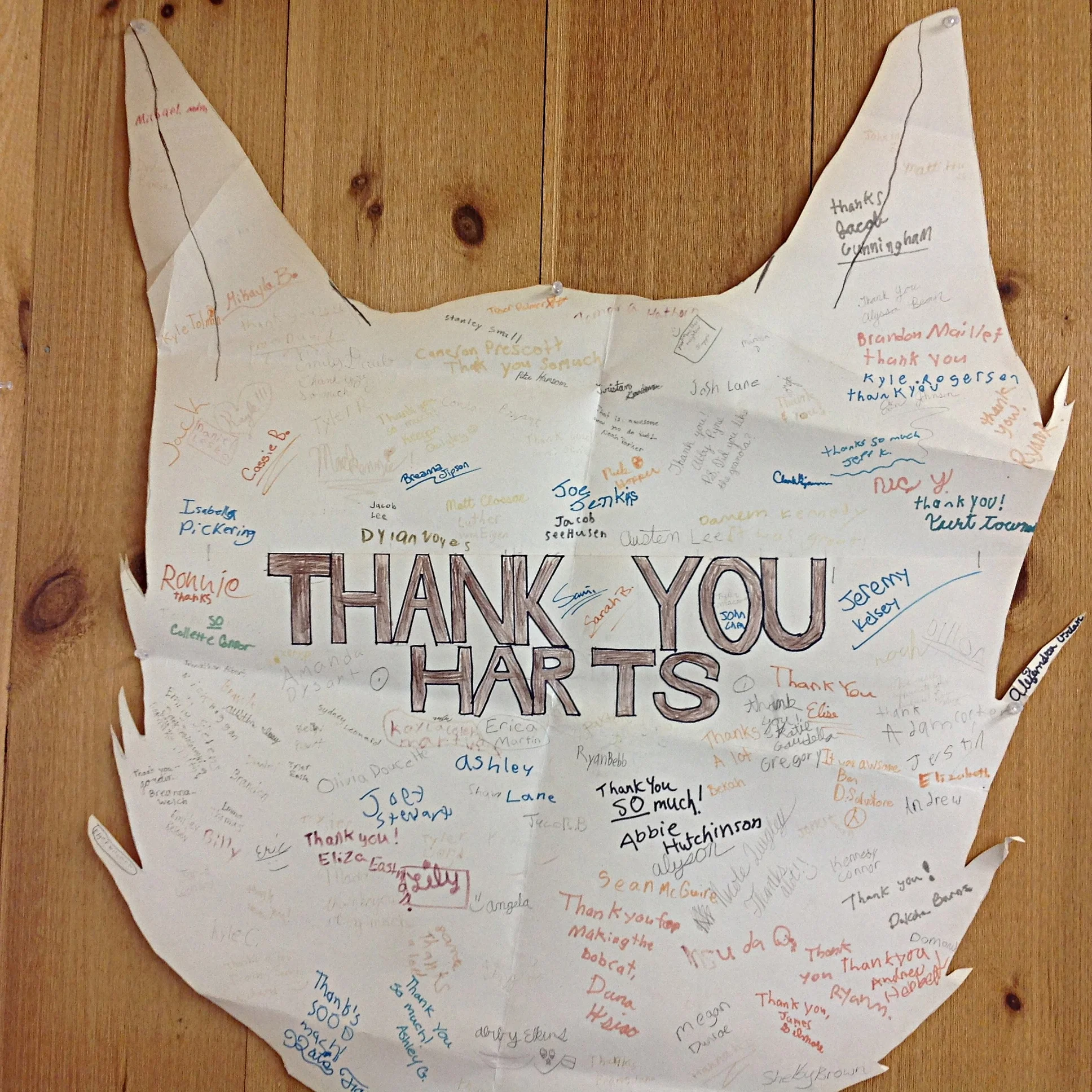Hampden Academy’s Bronco
October 3, 2012
Community Artist: Forest Hart
The following update is from art educator Leah Olson who had submitted photos in the spring that I posted about the sculpture being created for the new Hampden Academy. Students and teachers have just moved in to the new school, and so has the bronco.
Today I received a gift that has surpassed my expectations of what the arts can do for a community. Forest Hart never stops giving. He presented 32” x 20” framed and matted picture mosaic of the process to David Greenier (then vice principal), Ruey Yehle (principal), and myself. I couldn’t help but feel the tears coming on! In one of the pictures, my son and I are putting clay on the sculpture.
Emil Genest, Assistant Superintendent, David Greenier, 45 year Assistant Principal who just retired, Forest Hart, Leah Olson, and Ruey Yehle, Principal
Forest Hart – “Known as “Toby” to old friends — moved to Hampden with his family in 1948 when he was five years old. Artistry was always a part of Hart’s motivation as a taxidermist. His animals display the spirit and authenticity of living creatures, and his unique work has won awards in competitions all over the country. Given his drive and his innate creativity, the progression to casting animals in bronze was, perhaps, inevitable. Now his bronzes are winning accolades far and wide.” About the Bronco – “It also led to an unparalleled gift of time, beauty, education and history for the town in Maine where he grew up.” – Robin Wood – Bangor Daily News
“We are absolutely thrilled about this,” Hampden Academy principal Ruey Yehle said as she helped push clay onto the horse frame. “They will take ownership of this bronco and they’ll take a lot of pride in it.” Mrs. Yehle went several Saturday’s with students to work on the sculpture. She has worked tirelessly for this school system so that students have a high quality education in every way possible. Excellence in the small details consistently makes for excellence overall. Hampden Academy has two “state of the art” art rooms now! While in the planning stages Mrs. Yehle asked many questions to art teachers, furniture people, and architects as to what would work best for a student experiencing a successful studio art room.
The power of the arts lives strong here in this community. What is even more remarkable is that Forest Hart did not charge the school the money that it cost to create the large bronze bronco. It is a gift from the Hart’s. The idea is that by selling the smaller table top broncos the cost of the full-sized monument will be covered. “What if you don’t sell enough to pay for the job?” he was asked.
“That thought never entered my mind,” Hart remembers saying. “But I told them, ‘that’s my responsibility, not yours.’”
I am inclined to think that not just the alumni and residents of Hampden would purchase this magnificent tabletop sculpture – but anyone, anywhere who believes in the power of the arts symbolized in a running bronco. It connects us and reaches us in ways that cannot be said. This gift teaches us that through making small differences in our lives can have large effects. I have personally learned this year that the ability and willingness to surrender to unanticipated possibilities can bring opportunities, inspiration and an unprecedented pride about education for students…..priceless.
